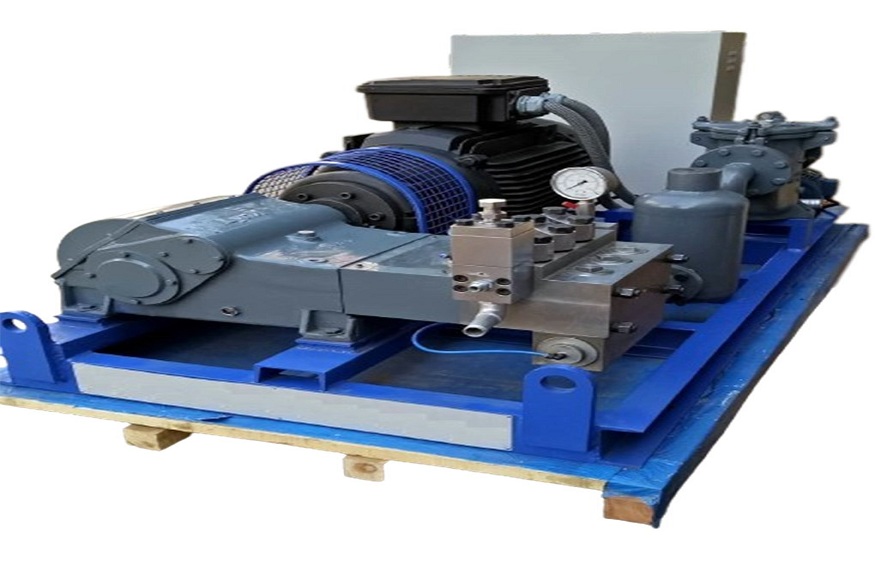How to Choose the Best Heavy Duty High Pressure Water Jet

Making the right decision about an extensive high pressure water jet among existing market alternatives proves to be a complicated process. The heavy duty high pressure water jet cleaning devices find multiple applications across industrial and commercial activities together with some domestic operations. Using the suitable water jet for cleaning tasks means you can achieve results fast and effectively thus saving costs and labor. The article will assist you in finding a water jet that perfects your specific needs alongside superb operational characteristics throughout extended use.
1.Understanding Pressure Ratings
A water jet cleans through its PSI rating because cleaning power gets measured by units of pounds per square inch (PSI). The cleaning power increases when pressure levels rise specifically when removing stubborn gutter debris as well as dirt amassed from industrial sources. Rising pressure does not always lead to best results since excessive pressure can lead to surface damage. Pick a pressure specification that provides adequate cleaning strength while staying within a safe threshold for your cleanup surfaces based on your regular cleaning materials.
2.Water Flow Rate Matters
Although pressure receives the majority of the focus, water flow rate—which is expressed in gallons per minute, or GPM—is just as significant. By swiftly washing away loosened dirt, an adequate flow rate guarantees effective cleaning. Although they also use more water, greater flow rates usually lead to quicker cleaning times. Look for units with at least 4 GPM for heavy-duty applications. The optimal water jet balances flow rate as well as pressure; this combination, commonly referred to as cleaning units (PSI × GPM), gives a more realistic image of a machine’s actual cleaning capacity than pressure alone.
3.Power Source Considerations
Usually, industrial-grade electric motors, gas engines, or diesel engines power heavy-duty water jets. Although gas-powered devices are quite mobile, they emit exhaust, therefore they are best used outdoors. For sustained operation in challenging situations, diesel models offer exceptional durability and fuel efficiency. Electric models are quieter and cleaner, but they may not be able to withstand higher pressures and need consistent access to power outlets with the right voltage. For optimum performance and convenience, the power system you choose should be determined by your usual work environment and the availability of power sources.
4.Durability and Build Quality
The quality of your water jet’s structure is crucial for heavy-duty applications. Seek out commercial-grade pumps that can endure repeated usage, ideally ceramic plunger pumps with brass or stainless steel heads. Inspect the quality of hoses, connectors, and fittings—these are frequently the first places to fail—and look for frames made of solid metal rather than plastic. Well-made units may have oil pressure sensors in addition to thermal relief valves to prevent overheating. Although more expensive, higher-quality devices have much longer service lives as well as are more dependable in harsh environments.
5.Heating Capabilities
Lowering water temperature to hot or steam function permits better cleaning results. Cold water jets remain simpler to handle but cost-efficient while facing challenges when dealing with oil and industrial wastes and greasy substances. These materials require hot water cleaning jets to process effectively given that hot water minimizes both cleaning duration and chemical detergent use. High-end cleaning devices enable users to change between cold and hot water by selecting different temperature options. Extra expenditure on heating performance offers better cleaning results when working with greasy materials and cold temperature conditions.
6. Mobility and Storage Requirements
Because heavy-duty water jets can be large devices, think about how you’ll transport and store yours. Although they require vehicle towing capabilities, trailer-mounted devices provide the greatest mobility between job sites. Although cart-mounted devices offer good mobility within a building, moving them between locations might be difficult. Systems that are fixed or skid-mounted provide the most power while staying in one place. If you’ll be navigating stairs, uneven terrain, or confined spaces, take into account the weight, dimensions, and wheel quality, along with handle design. Which layout is appropriate for you should depend on your needs for transportation and storage space.
7. Nozzle Options and Accessories
Your water jet’s adaptability is mostly determined by the nozzle types and accessories that are available. Units having several nozzle tips with different spray patterns and angles should be sought out; these are usually 0° (pencil jet), 15° (chiseling), 25° (cleaning), and 40° (washing). For certain jobs, specialized equipment like rotary nozzles for tough dirt, extension wands for reaching heights, and surface cleaners for flat surfaces can significantly increase productivity. To remove paint or rust, sand injection kits convert water jets into wet sandblasters. Make sure the model you’ve selected can accommodate the extras you’ll require for your specific uses.
8. Maintenance Requirements and Support
The operation of any water jet system depends on routine maintenance for reliable operation even with the most advanced models. The availability of replacement parts together with the frequency of scheduled maintenance checks and straightforwardness of regular operations such as filter and oil changes should be among your considerations. Consider both warranty services from the manufacturer alongside the availability of nearby repair professionals that specialize in your water jet model. For essential systems manufacturers provide maintenance packages as well as service contracts allowing analysis of their worth for mission-dependent devices. Strong initial expenses lead to better long-term value from a machine that offers both strong support and easy maintenance capabilities.
Conclusion
Your particular cleaning requirements, working environment, and financial limits must all be carefully taken into account when selecting the best heavy duty high pressure water jet for cleaning walls in dubai. You may identify a machine that offers exceptional performance and dependability by assessing pressure ratings, flow rates, power sources, build quality, heating capabilities, mobility needs, accessory possibilities, and maintenance assistance. Keep in mind that investing in quality pays off in the long term through increased cleaning efficiency, decreased downtime, and longer equipment life—the least expensive solution rarely offers the best value. Before deciding, take your time looking at your options and, if at all possible, ask for demonstrations.
